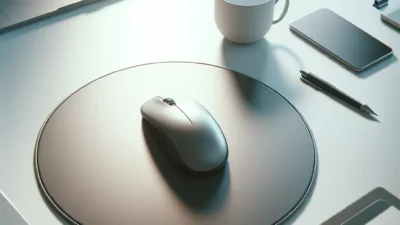Understanding HEIC and JPG: Why Convert?
Before diving into the how-to, let’s briefly understand why you might need to convert your HEIC images to the more widely compatible JPG format. HEIC (High Efficiency Image File Format), also known as HEIF (High Efficiency Image File Format), is a newer image format championed by Apple. It boasts superior compression compared to JPG, resulting in smaller file sizes while maintaining comparable image quality. This is fantastic for storage space, especially on devices with limited memory. However, this very advantage presents a challenge: not all devices and software support HEIC. Opening a HEIC file on an older computer or uploading it to a website that only accepts JPGs can lead to frustrating compatibility issues. This is where the need for conversion steps in. Think of it as translating between two languages: HEIC and JPG. You have a beautiful photo in HEIC, but to share it widely, you need to translate it into the widely understood language of JPG.
The JPG (JPEG) format, on the other hand, is a veteran in the digital image world. Its broad compatibility makes it the default choice for many online platforms, photo-sharing sites, and older software. While the compression isn’t as efficient as HEIC, its ubiquitous nature makes it a must-know format.
Methods for Converting HEIC to JPG: A Multifaceted Approach
Now, let’s explore the various ways you can transform your HEIC images into the versatile JPG format. The optimal method depends on your technical skills and the number of images you need to convert. We’ll cover several options, from the simplest online tools to more advanced desktop solutions.
Method 1: Online Converters – Quick and Easy for Small Batches
For a small number of images, online converters offer a simple and convenient solution. Many free websites provide this service. You simply upload your HEIC files, select JPG as the output format, and download the converted images. This is a great option for occasional conversions or when you’re on the go and don’t have access to desktop software. However, be mindful of uploading sensitive images to untrusted websites – always prioritize security when choosing an online converter. Using a reputable website is key.
One recommendation for this approach is to CloudConvert which boasts a solid reputation for reliable conversions. Remember to check their user reviews before using any online converter to ensure its reliability. Always compare a few different options to decide which one best suits your needs.
Method 2: Built-in Operating System Features: Ease of Access for Everyday Users
Both macOS and Windows operating systems now offer native support for HEIC files, but they may not automatically open them in a way you anticipate. However, usually, you don’t need to install extra software. The built-in features often include options for exporting or saving the HEIC files as JPGs. This is often the most seamless approach, especially if you’re already comfortable navigating your operating system’s settings.
In macOS, for instance, you can simply open the HEIC file in Preview, then go to the “File” menu and choose “Export”. You’ll then have the option to select JPG as the format. Windows 10 and 11 have similar functionalities built within their photo viewers. This method is ideal for those who prefer to avoid installing additional software and want a quick and efficient conversion.
Method 3: Dedicated Image Editing Software: Advanced Control and Batch Processing
For users who regularly handle images or need to convert a large number of HEIC files, dedicated image editing software like Adobe Photoshop or GIMP provides the most control and efficiency. These programs offer advanced features, including batch processing, which allows you to convert multiple files simultaneously without individual intervention. This saves a considerable amount of time and effort, especially for large collections of images.
These professional-grade programs usually provide options for adjusting image settings during the conversion process, giving you fine-grained control over quality and file size. If you’re a professional photographer or frequently work with images, investing in such software is well worth considering for its efficiency.
Method 4: Using Preview on macOS: Simple approach for Apple users
If you’re an Apple user, Preview is often the easiest option. Simply open your HEIC file in Preview. Then, go to “File” > “Export”. Select JPG as your file type and adjust the quality if needed. It’s a straightforward process, perfect for those who prefer simple solutions. This is generally the quickest method for casual users on Apple devices.
Method 5: Third-Party Software: Specialized tools for Windows
For Windows users who don’t want to use built-in operating system features or open-source software solutions might consider utilizing third-party software. Many free and paid options are available online. These programs often specialize in image conversion, and some include additional features such as image editing tools or batch processing capabilities. As always, read reviews thoroughly and download software only from trusted sources to ensure safety and avoid malware.
Consider checking out user reviews on trusted tech websites, like PCMag, before downloading any third-party software. This step can help you ensure the program you choose is safe and reliable.
Choosing the Right Method: A Practical Approach
The best method for converting HEIC to JPG depends entirely on your needs and technical proficiency. If you only need to convert a few images occasionally, an online converter is quick and convenient. If you’re an Apple user, leveraging Preview is often the most streamlined approach. For frequent conversions or large batches of images, dedicated image editing software provides superior efficiency and control. And for Windows users seeking dedicated tools, exploring third-party options may be the best solution. Understanding the strengths and limitations of each method empowers you to make an informed decision.
Beyond the Conversion: Managing your Image Files
Once you’ve successfully converted your images, consider adopting a more organized approach to manage your digital photos. This not only makes it easier to find specific images but also helps to avoid future conversion headaches. Creating a clear folder structure and regularly backing up your images are essential best practices for digital asset management.
Think about creating folders based on dates, events, or projects. This categorization allows you to quickly locate the photos you need. Regular backups are equally crucial to protect your digital memories from data loss. Consider using cloud storage or external hard drives to ensure your images are safe and accessible even if your primary storage device fails.
The Future of Image Formats: HEIC’s Role in a Changing Landscape
While JPG remains a ubiquitous format, HEIC’s superior compression capabilities suggest it could play an increasingly significant role in the future. As more devices and software gain native support for HEIC, the need for conversion may gradually decrease. However, for the foreseeable future, maintaining compatibility with JPG will remain crucial for sharing images across different platforms.
The ongoing evolution of image formats highlights the importance of understanding the strengths and limitations of various formats and having the skills to navigate between them. The ability to convert between formats like HEIC and JPG ensures that your precious images remain accessible and shareable in today’s ever-changing digital world.




